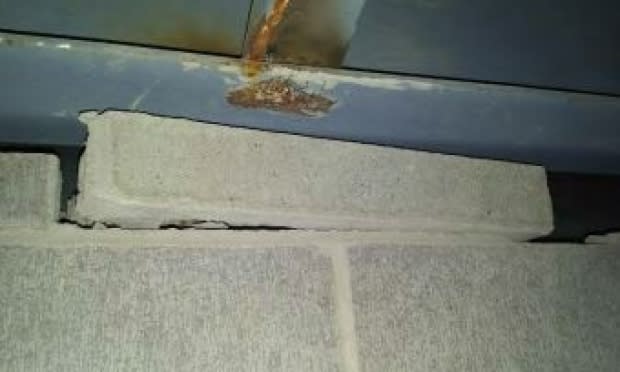Oxford school closed over safety issues was 'well built,' says province
It took five engineering firms, numerous site visits and $400,000 in repairs to convince officials that the Oxford Regional Education Centre was safe enough to reopen last month.
The green light was given three months after the school closed due to fears interior walls might not withstand vibrations caused by an earthquake or even high winds.
After an Aug. 27 site visit, Herb Steeves, the director of operational services for the Chignecto-Central Regional Centre for Education, sent an email update to senior officials at the Department of Education.
Steeves wrote, "Question has been asked who was the inspector on the job?"
Proper inspections occurred
Gerard Jessome, executive director of building project services for the Department of Transportation and Infrastructure Renewal, said Monday proper inspections had taken place and deficiencies, even dozens of them, were not unusual for a building the size of a school.

"We did have inspections on site and obviously issues that were found during the construction process ... were addressed at the time," he told CBC News.
"A building project is very complex, many different pieces to the puzzle and it's really not unusual for that number of deficiencies to incur on a project such as a school."
The school, built by Bird Construction, opened eight years ago at a cost of $18 million.
Concerns were first noted by Andrea Doncaster in an initial report dated Aug. 15 to the Chignecto-Central Regional Centre for Education.
Staff discovered loose blocks
The structural engineer was hired to take a closer look at walls adjacent the gym after school maintenance staff discovered loose concrete blocks at the top of one of those walls.
Doncaster's Aug. 9 visit to the P-12 school convinced her to recommend "the school be taken out of service, pending further review."
"Based on the issue identified, there is a risk of masonry walls that are too slender and/or not tied properly at the top, falling down if the building experiences significant vibration or lateral movement," she noted in a letter to school officials.
"In the event of an earthquake, people should evacuate the building, taking care to stay away from masonry brick walls if possible … High winds could also cause enough lateral movement to make the building unsafe."
After a more detailed examination of the school on Aug 17, Doncaster noted even more problems, including:
Masonry walls not adequately supported.
Soft, crumbly grout (mortar).
Cracks in walls.
Loose masonry blocks on top of walls.
Loose, missing or removable anchor bolts.
In all, she found 20 deficiencies throughout the school.

Her assessment sparked a flurry of activity between school administrators and the Education and Transportation and Infrastructure Renewal departments, which were first notified of the problems on Aug 17. The province closed the school on Aug 21.
Parents and students were informed on Aug. 23 classes would not resume as normal in September, citing "a mortar issue" as the reason.

Subsequent site visits and evaluations by Doncaster and other engineers found even more problems.
Joe McIvor, a mason brought in by engineering firm Stantec, questioned the quality of the grout or mortar used to help cement blocks and bricks in place.
"The grout crumbles and rubs out of unpainted joints easily with a steel rod," said an Aug. 27 report. "One possibility for this is too much sand in the mix."
Despite the concerns outlined by engineers and the lengthy closure, Jessome expressed confidence Monday in the school's construction and its safety.
Tests subsequently performed on the mortar determined there were no problems, he added. In addition, inspections were performed on "every block wall in that school" and any issues were fixed.
"It's well built," he said. "The contractor did a good job with the building."

